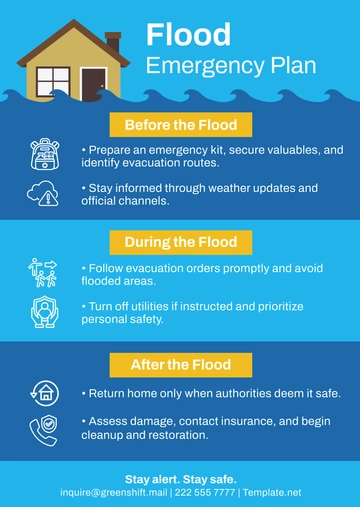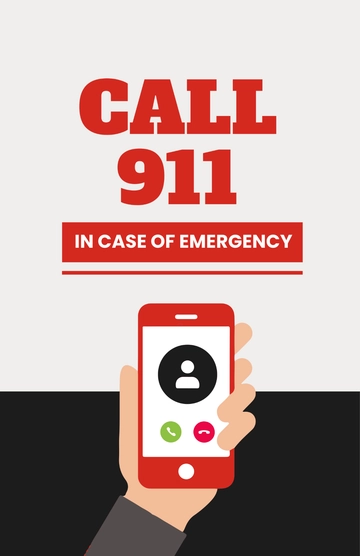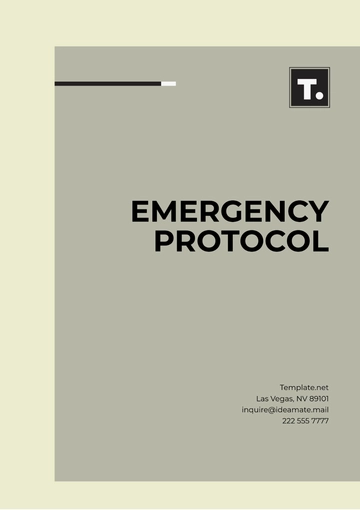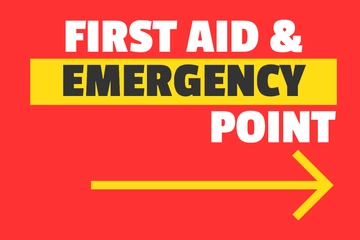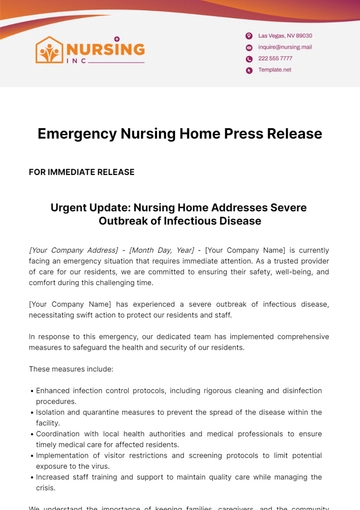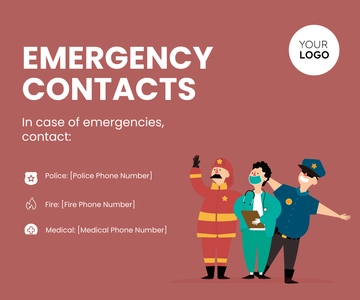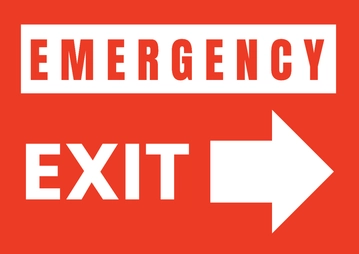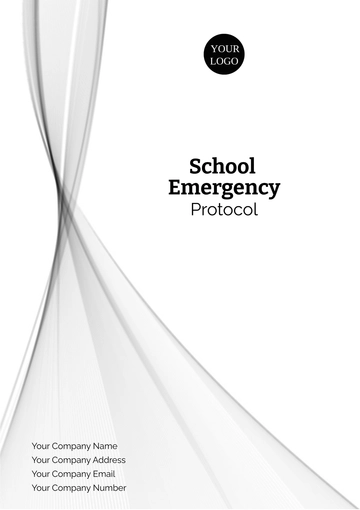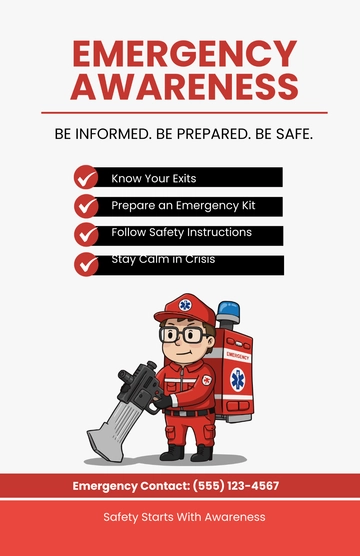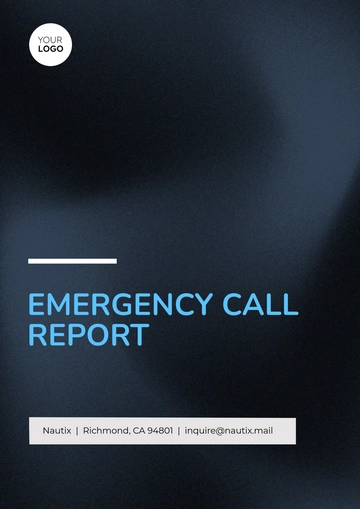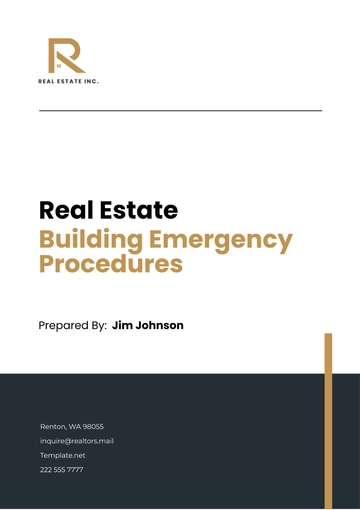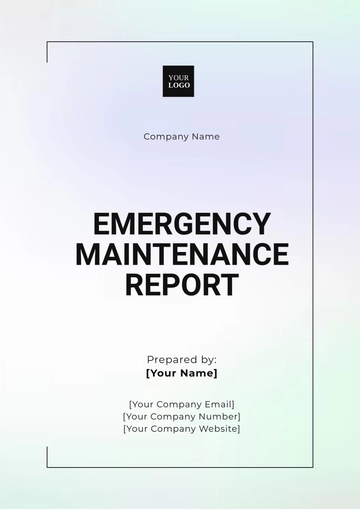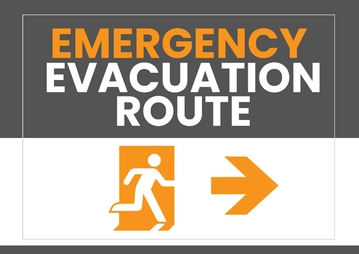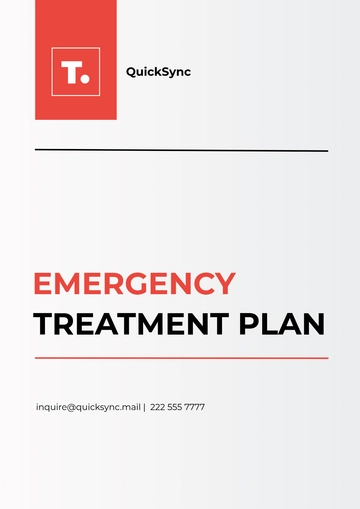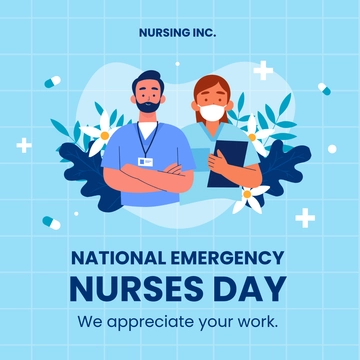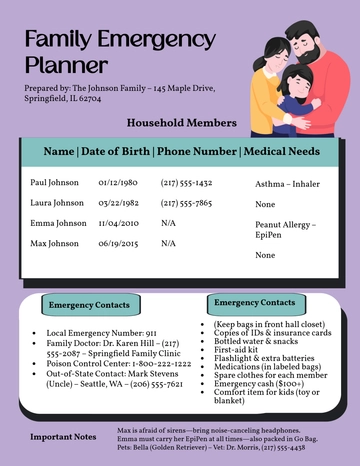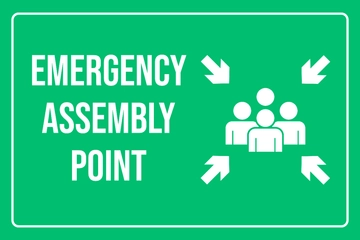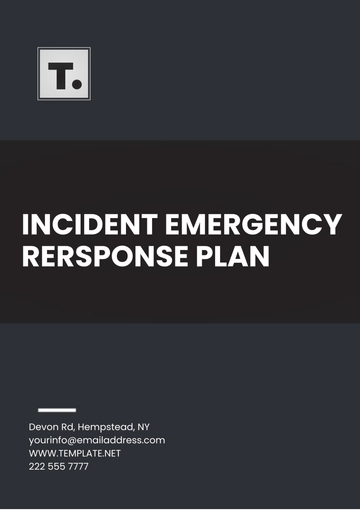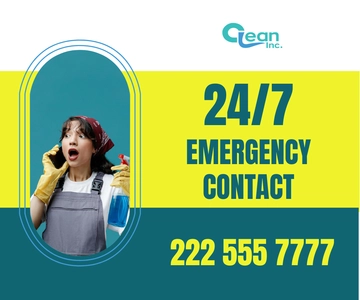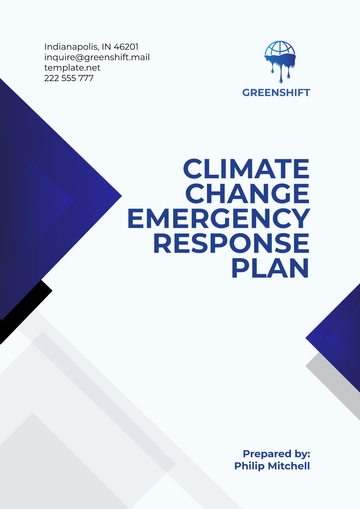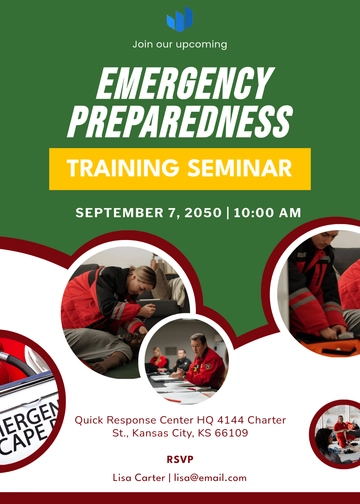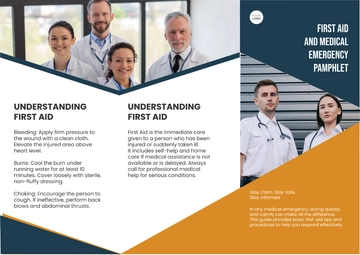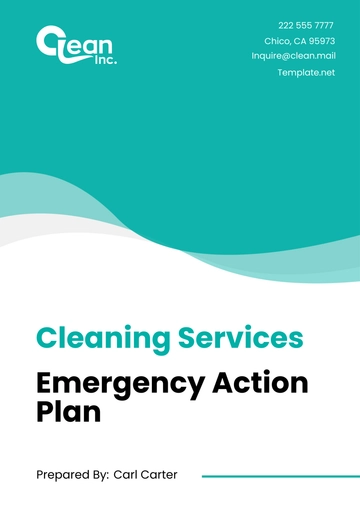Free Advanced Emergency Planning
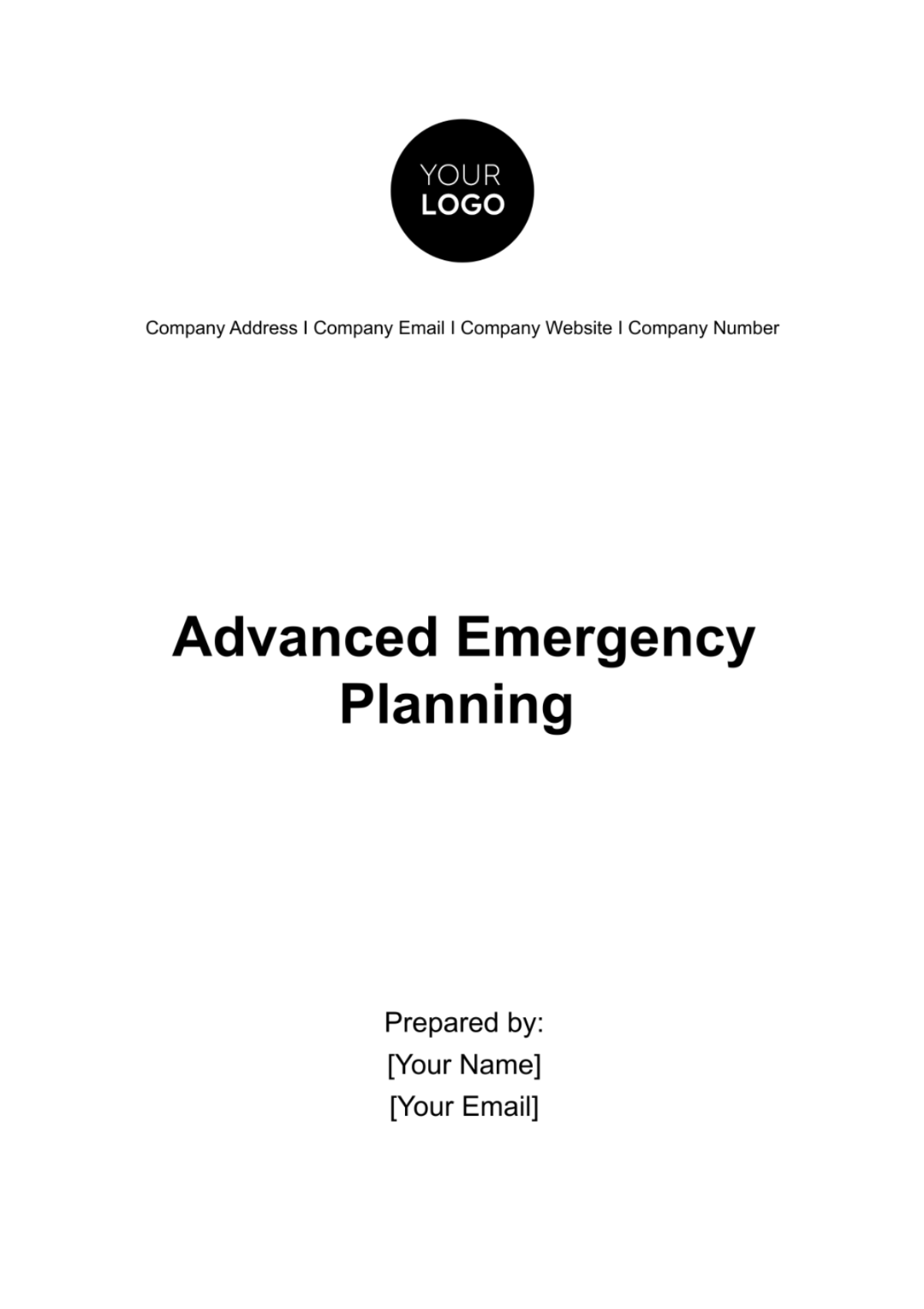
I. Introduction
In accordance with the Occupational Safety and Health Administration (OSHA) regulations and other relevant US health and safety standards, [Your Company Name] has developed this Comprehensive Advanced Emergency Planning (AEP) document. This AEP is designed to safeguard the well-being of our employees, visitors, and the surrounding community in the event of emergencies. Our commitment to health and safety extends to all aspects of our operations, and this plan serves as a critical framework to respond effectively to various emergency scenarios.
This document outlines the strategies, procedures, and responsibilities essential for mitigating risks, ensuring rapid response, and promoting a safe environment within our organization. We emphasize the importance of regular training, drills, and adherence to all applicable laws and regulations as part of our commitment to a culture of safety. In collaboration with our emergency response team, we aim to minimize the impact of emergencies and protect lives and property.
II. Scope and Purpose
The scope of this Comprehensive Advanced Emergency Planning (AEP) document is to establish a systematic and legally compliant approach to emergency preparedness and response within [Your Company Name]. It encompasses a wide range of potential emergency scenarios, including but not limited to natural disasters, chemical spills, medical emergencies, and workplace incidents.
The primary purpose of this AEP is to safeguard the lives of our employees, visitors, and the surrounding community, along with protecting company assets and continuity of operations. This document serves as a reference guide for all personnel involved in emergency response, outlining their roles and responsibilities to ensure a coordinated and effective response to emergencies.
III. Legal and Regulatory Framework
In this section, we provide an overview of the legal and regulatory framework that governs emergency planning and response in the United States. It is crucial to understand and comply with these regulations to ensure the safety and well-being of our personnel and the community. Below are six key regulatory references:
Occupational Safety and Health Administration (OSHA): OSHA mandates that employers must have an emergency action plan in place, including procedures for evacuation and medical response (29 CFR 1910.38).
Environmental Protection Agency (EPA): EPA regulations require businesses handling hazardous materials to establish emergency response plans, as outlined in 40 CFR 355.
Federal Emergency Management Agency (FEMA): FEMA provides guidance on developing and implementing emergency plans, including recommendations for hazard assessments.
National Fire Protection Association (NFPA): NFPA 1600 sets standards for disaster/emergency management and business continuity programs.
Department of Transportation (DOT): DOT regulations cover the safe transportation of hazardous materials, including requirements for emergency response (49 CFR).
State and Local Regulations: Additionally, we must adhere to specific state and local regulations that may impose additional emergency planning requirements.
IV. Risk Assessment
Understanding and evaluating potential hazards is a fundamental step in effective emergency planning. By conducting a comprehensive risk assessment, [Your Company Name] can identify and prioritize potential threats to safety and business continuity. Below are six key areas to consider in our risk assessment:
Natural Disasters: Assess the susceptibility to natural disasters such as earthquakes, hurricanes, floods, and wildfires, and their potential impact on our facilities and personnel.
Chemical Hazards: Identify and evaluate the risks associated with the storage, handling, and transportation of hazardous chemicals, ensuring compliance with OSHA's Hazard Communication Standard.
Medical Emergencies: Analyze the potential for medical emergencies in the workplace and establish protocols for timely first aid and medical assistance.
Fire Hazards: Identify fire risks, including sources of ignition and flammable materials, and develop fire prevention and response measures in accordance with NFPA guidelines.
Workplace Incidents: Examine the likelihood of workplace accidents and injuries, including slip and fall hazards, and implement preventive measures and response plans.
Security Threats: Assess the risk of security breaches, including unauthorized access, cyberattacks, and vandalism, and establish security protocols and incident response procedures.
By thoroughly evaluating these risks and their potential consequences, we can tailor our emergency response strategies to address specific scenarios, enhance preparedness, and minimize the impact of emergencies.
V. Emergency Response Team
In the event of an emergency, [Your Company Name] has assembled a dedicated Emergency Response Team responsible for coordinating and executing our emergency plan. This team consists of individuals with specialized training and expertise in various aspects of emergency response. Below is our Emergency Response Team:
Role/Position | Name | Responsibilities |
Emergency Response Coordinator | Eliza Bennett | Overall coordination of emergency response efforts. |
Safety Officer | Theodore Knight | Ensuring safety protocols are followed during response. |
Medical First Responder | Dr. Alistair Murphy | Providing medical assistance and triage when necessary. |
Fire Safety Officer | Isadora Fletcher | Managing fire-related emergencies and evacuation procedures. |
VI. Communication Plan
A robust communication plan is essential for ensuring effective response to emergencies. [Your Company Name] has established a comprehensive communication strategy. This plan ensures seamless and timely information dissemination among all stakeholders, both internal and external, during emergency situations.
Internal Communication: Our plan outlines procedures for notifying and updating employees and designated personnel about the emergency, including the use of intercoms, text messages, and emails.
External Communication: We maintain contact lists and protocols for communicating with local authorities, emergency services, and relevant regulatory agencies as required by law.
Media and Public Relations: We designate a spokesperson to manage media inquiries, ensuring accurate and consistent information is provided to the public.
Family Notification: In the event of a severe incident, we have established a process for notifying the families of affected employees, in accordance with privacy laws and regulations.
Regular Testing: We conduct periodic drills to assess the effectiveness of our communication systems and make necessary improvements.
Alternate Communication Channels: We have identified backup communication methods in case primary systems fail.
This communication plan is crucial for maintaining transparency, minimizing confusion, and ensuring the safety and well-being of all individuals involved in or affected by an emergency situation.
VII. Evacuation Procedures
In the interest of safety and compliance, [Your Company Name] has developed clear and effective evacuation procedures. These procedures are designed to guide all personnel and visitors to safety in the event of an emergency. Below are the steps that outline our evacuation procedures:
VIII. Emergency Equipment and Resources
[Your Company Name] is committed to maintaining the necessary emergency equipment and resources to respond effectively to a wide range of emergency situations. Our inventory includes, but is not limited to, the following essential items:
First Aid Kits: Strategically located throughout our facilities and regularly inspected to ensure they are well-stocked and up to date.
Fire Extinguishers: Placed at key points in accordance with NFPA guidelines, regularly inspected, and serviced to ensure their functionality.
Emergency Lighting: Battery-powered exit signs and emergency lighting systems are installed to provide illumination during power outages or evacuations.
AEDs (Automated External Defibrillators): Easily accessible AEDs with clear signage and trained personnel to operate them.
Personal Protective Equipment (PPE): Available for employees to protect against various hazards, including gloves, masks, and safety glasses.
Emergency Contact Lists: Maintained and regularly updated with contact information for emergency services, local authorities, and medical facilities.
By maintaining these resources and equipment, we ensure a rapid and effective response to emergencies, reducing potential risks to life and property
IX. Training and Drills
[Your Company Name] places significant emphasis on preparedness through regular training and drills, aligning with US health and safety standards. Our comprehensive approach includes:
Employee Training: All employees receive training in emergency procedures, including evacuation, first aid, and proper use of equipment.
Regular Drills: We conduct periodic emergency drills to assess response readiness and improve performance.
Specialized Training: Personnel with specific roles, such as first responders or safety officers, undergo specialized training.
Review and Feedback: After each drill, we review performance, gather feedback, and make necessary adjustments.
Documentation: We maintain records of training and drill outcomes to ensure compliance with regulatory requirements.
Scenario-Based Drills: Drills simulate various emergency scenarios, including fires, chemical spills, and natural disasters.
X. Incident Reporting and Documentation
[Your Company Name] places great importance on incident reporting and documentation in compliance with US health and safety standards. This section outlines the procedures and protocols for reporting, recording, and analyzing incidents to enhance safety measures.
Immediate Reporting: All employees and relevant personnel must promptly report any incidents or near-misses to their immediate supervisor or designated incident reporting contact.
Documentation: Detailed records of incidents, including date, time, location, involved parties, and circumstances, are diligently documented.
Investigation: Trained personnel conduct thorough investigations to identify root causes, contributing factors, and corrective actions.
Regulatory Reporting: We ensure that all required incident reports are submitted to the appropriate regulatory agencies in accordance with US law.
Corrective Actions: Based on investigation findings, corrective actions are developed and implemented to prevent recurrence.
Review and Analysis: We periodically review incident data to identify trends, assess the effectiveness of safety measures, and make continuous improvements.
This meticulous approach to incident reporting and documentation aligns with legal requirements and fosters a safer working environment at [Your Company Name].
- 100% Customizable, free editor
- Access 1 Million+ Templates, photo’s & graphics
- Download or share as a template
- Click and replace photos, graphics, text, backgrounds
- Resize, crop, AI write & more
- Access advanced editor
Elevate emergency preparedness with Template.net's Advanced Emergency Planning Template. This editable and customizable tool offers a comprehensive framework for developing robust emergency plans. Utilize our intuitive Ai Editor Tool to tailor the template to your organization's specific needs effortlessly, ensuring thorough planning and readiness for any contingency.
